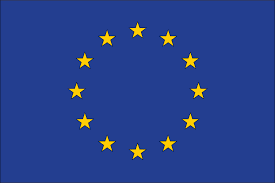Chemycal has been acquired by 3E
Learn MoreChemycal has been acquired by 3E
Learn MoreDiscover how Chemycal PRO helps you boosting your regulatory monitoring:

The EU Scientific Committee on Consumer Safety (SCCS) has recently issued its updated guidance, denoted as SCCS/1647/22, encompassing significant revisions and updates. This comprehensive review includes two corrigenda: Corrigendum 1, concentrating on Table 3A page 27, specifically addressing a footnote addition under deo non-spray, and Corrigendum 2, which extends its coverage to both Tables 3A and 3B. These amendments were officially adopted on 26 October 2023 and 21 December 2023, respectively.
The revised Notes of Guidance (NoG) underscore various critical aspects in their updates.
The importance of conducting a systematic literature review is emphasized, highlighting its pivotal role in informing safety evaluations. Furthermore, the guidance integrates advancements in animal-free alternative methods, denoted as NAM (New Approach Methodology). Notable adjustments are introduced for acute inhalation, skin irritation testing, and eye irritation testing, incorporating the use of DAL (Defined Approach for eye irritation, Liquid) and DASS (Defined Approaches for Skin Sensitisation). Additionally, novel in vitro methods for genotoxicity testing, such as 3D skin Comet and in vitro micronucleus assays, are incorporated.
The guidance also accentuates the significance of Adverse Outcome Pathway (AOP), Defined Approaches (DAs), Integrated Approaches to Testing and Assessment (IATA), and Next Generation Risk Assessment (NGRA). Within this framework, key definitions such as Bioactivity/Exposure Ratio (BER), Threshold of Toxicological Concern (TTC), and internal TTC (iTTC) are provided. Updates in in silico prediction possibilities, a thorough review of exposure data (including models and parameters specific to inhalation and aggregate exposure), and an examination of children's exposure to different cosmetic product categories based on age are also addressed.
Moreover, the guidance delves into the rationale behind exposure data for sun protection by sunscreen products. It explores the intersection of Human Biomonitoring (HBM) and differences in approach with the SCCS for risk assessment. The document also outlines reporting requirements for substances classified as Carcinogenic, Mutagenic, or Toxic for Reproduction (CMRs), as well as considerations for endocrine-active substances, introducing a non-monotonic dose-response and associated reporting requirements. Lastly, templates for Physiologically Based ToxicoKinetics (PBTK) model description and parameter verification and analysis are provided as part of the updated guidance.
2013 © MyChemicalMonitoring. ALL Rights Reserved. About Us | Terms and Conditions